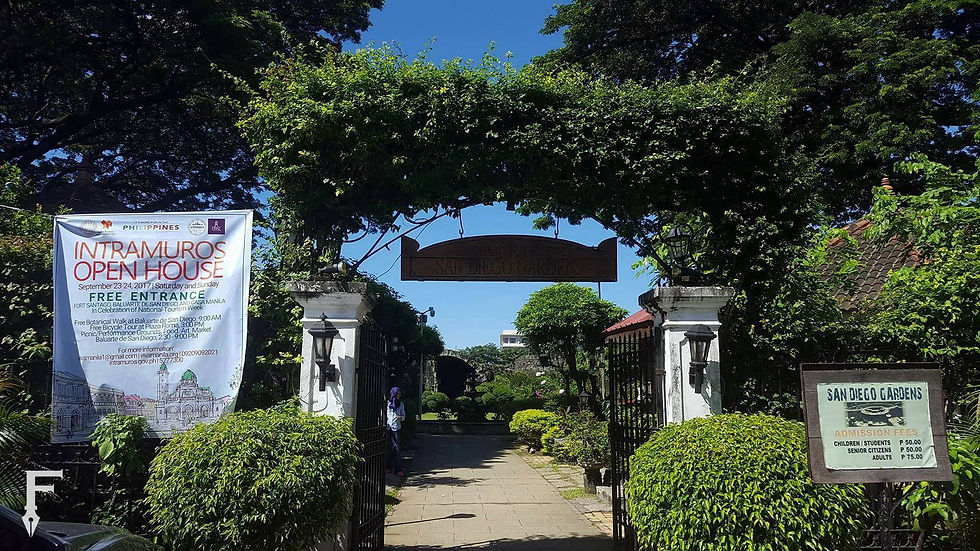Philippines celebrates World Tourism Day at Intramuros
- by Angela Soriano and Yanni Wingarts
- Sep 23, 2017
- 3 min read
The day started out as early as 9 a.m. with the sun blazing with intense heat; but that did not stop people from going to Intramuros to take advantage of the free entrance access to various ancient places around the walled city.

Photo by Angela Soriano/THE FOURTH
The famous Intramuros in Manila offered free entrance access to its surrounding historical places to everyone in commemoration of World Tourism Day last September 23-24.
Early into the event, food stalls were being set up in Baluarte de San Diego Gardens with many people, especially students roaming about the garden covered with rich green pastures that were brightly showered by the sun's rays.
In Casa Manila, located behind San Agustin Church on General Luna St., there could be seen different antique furniture throughout the whole museum which showcased how grandiose houses in Manila were decorated during the Spanish colonial era.
The museum’s foundation (lower part) is made of stone while the upper part is made of wood that would greet you with a grand staircase that leads all the way to the topmost room (on the third floor) that has a huge room where the sala and music room are located when you enter the museum.
It was also well-furnished, had maximized ventilation, spacious and had many different rooms for different activities, like the dining room, which contained a long table that can easily fit a dozen guest, the kitchen, which had a huge cement-like stove that occupied two corners of the kitchen, and music room.
There were also huge sideboards used to place ornaments to impress guest, the musical instruments were also made of wood; everything was as if they came out of a storybook.
A few girl scouts that were also inside the museum said that they wanted to go there not because they had to, but because they wanted to.
One could see the fascination in their faces as their eyes wandered at every nook and cranny of the museum and everything that it had to offer its visitors.
There was a mix of Filipinos and foreigners exploring the area—a manifestation of how effective it is to promote the country’s tourism by showing cultural heritage sites.
Overall, the event was indeed enjoyable and worth attending to because of the free entrance access to the walled city's vicinity, especially if you have someone you could enjoy doing the event activities. It was a good time and place to revisit a piece of Philippine’s history.
When you are within the walls of Intramuros, it would seem as if you are not inside the modern City of Manila—it is free from traffic, less polluted, and spacious that enables people to roam around.
A TOUR TO THE PAST
In the present, Intramuros serves as a tourist spot where Filipinos and foreigners may experience the Spanish-era Manila through the Spanish-influenced infrastructures such as Casa Manila, Fort Santiago, and Manila Cathedral.
Fort Santiago was built as a part of the seafront defense line of Intramuros, hence, its strategic location is situated at the Pasig River.
When walking inside the premises of Fort Santiago, one can only imagine how the military maximized its use by entering their old fort lookout which are hexagons shaped with small rectangular openings used to navigate around to track down invaders and by exploring the barracks of the troops, warehouses, dungeons, and quarters.
This is also where Dr. Jose Rizal was imprisoned for two months, which is why within Fort Santiago, there is a Rizal museum where visitors may learn about the works and travels of our national hero. They also exhibit copies of his translated and non-translated versions of his literary piece.
These pieces, summed up with the Intramuros trip, definitely rounded up the celebration of World Tourism Day as they featured all of the beautiful spots and pieces of the Philippines.











Comments